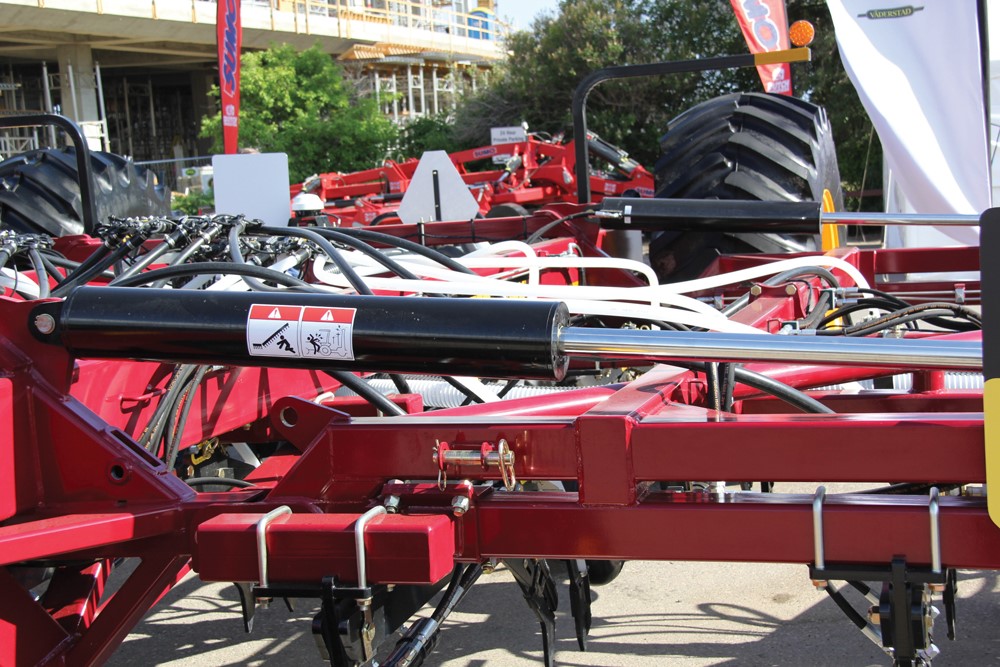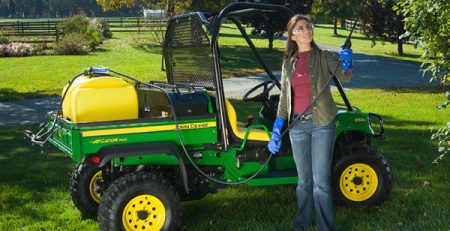Tractor Selection Guide 2

Hydraulics are not limited to the tractor. Having a system in the tractor that can efficiently handle your implements is just as important. Source: “Grain News” – Understanding Hydraulic Systems
Transmission and Hydraulics
These features can add another layer to the decision. This is especially true on tractors approaching that 40-50 hp size when it comes to work requirements. Hydrostatic transmissions are convenient, offer clutchless operation, and can change from forward to reverse instantly for jobs like operating a loader. Pure hydrostatic transmissions on those 40+ hp tractors can get tricky however. For example, you set up a 40 PTO-hp tractor with a front end loader and weight the rear tires for ballast and become disappointed when trying to pull up hills in high range because the tractor drags much more than if it were set up with a shuttle shift or conventional transmission. Why? Mainly because in order to operate the loader efficiently, you have to add ballast and weight to the rear wheels, which stresses the hydro’s ability to pull them with that added weight.
Companies are now grouping tractors in ‘families’, ‘series’, or ‘classes’, based on frame, emissions, electronics, and power transfer measurements. Look closely at the high end of one ‘family’ with the low end of the next ‘family’ up. Consult with a knowledgeable sales consultant who can translate all the ‘jargon’ to what you actually want to accomplish.
Typically, as you ask your tractor to do more field work where ground speed and PTO need to be simultaneously ‘fixed’, you’ll move away from hydrostatic and more to shuttle, shift on the go, or standard transmissions with fixed gears.
Weight isn’t as important as you might think. All tractors are built pretty tough these days. This criteria usually has little to do with the quality of a tractor.
Lift Capacity and Front End Loaders are a common option added to smaller tractors for obvious reasons. It can be very deceptive. In fact, when a manufacturer quotes lift capacity, whether a 3-point hitch or a front end loader, the number is often times not equal to what the tractor can actually lift in the ‘real world’. Why? Because lift capacity can be measured many ways… Capacity to full height? Static lift capacity? Pivot Pin capacity? Center of the bucket? Be careful, and don’t hesitate to question claims.
Capacity and Speed should also be closely examined. Often, a loader might boast a higher lift capacity, but it has a slower cycling time, slowing the speed of operation…ask the right questions and know what you need in the size of the bucket when choosing your loader.
After market loaders can be very tempting. They are typically less expensive, sure. They also claim to be set up for a wide range of tractors. Where the potential for deception lies is that they might fit ‘close’ to a number of models and makes, but they’re never ‘exactly’ right. Every tractor is manufactured with different flow capacities, pumps, filters, etc. They also have differing stress points on the frame. When the manufacturer builds their loaders, they set them up to be precisely correct for their specific models. Any change when you outfit your tractor with an after-market product like a loader will bring about a change in performance, capacity, and efficiency… for example, tractor manufacturers will have what’s called a ‘regenerative valve’ which allows simultaneous operation of the lift and tilt for a loader while many after market buckets will not. Finally, an after market loader most likely voids any warranty the tractor manufacturer might have on components that operate them.
Finally, it’s generally recommended that 4-Wheel Drive is a must for tractors under 50 hp when outfitted with a front end loader. When you load up the front end of your tractor in wet or soft conditions it will inevitably add drag to the front end and the rear wheels just can’t move the load as efficiently as when the front wheels are locked out. Traction, stability, and other factors all come into play with moving loads and having the 4-wheel drive makes a huge difference, not to mention balance and safety when in muddy or tricky situations and traveling with the load.
Read more about it:
Most of this article came from an article by Jon Ewald, Ewald Kubota – Ewald Kubota – Tractor Buying Facts
Explain that Stuff! Tractors is a simple, interesting explanation about tractors in general and how they work
“Grain News” – Understanding Hydraulic Systems is an excellent, more detailed description of hydraulic systems for implements and larger tractor matching.




Comment (1)
[…] Click to read next: Transmission and Hydraulics […]
Comments are closed.